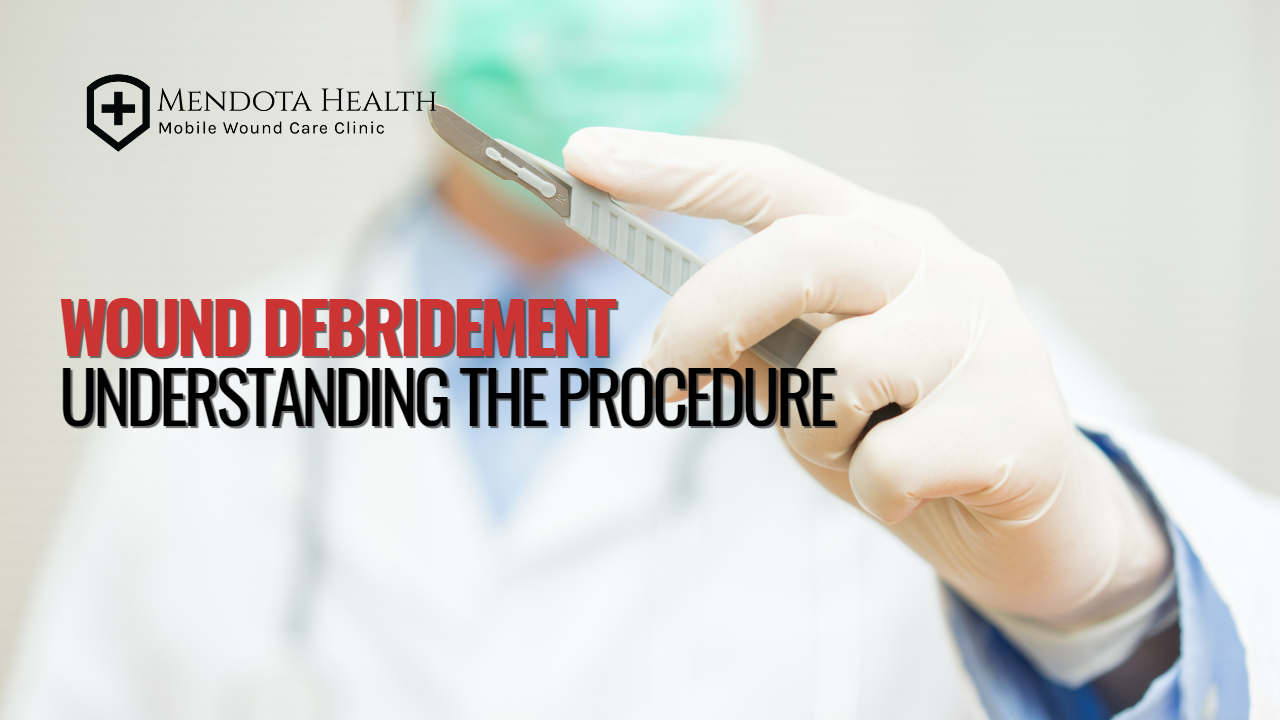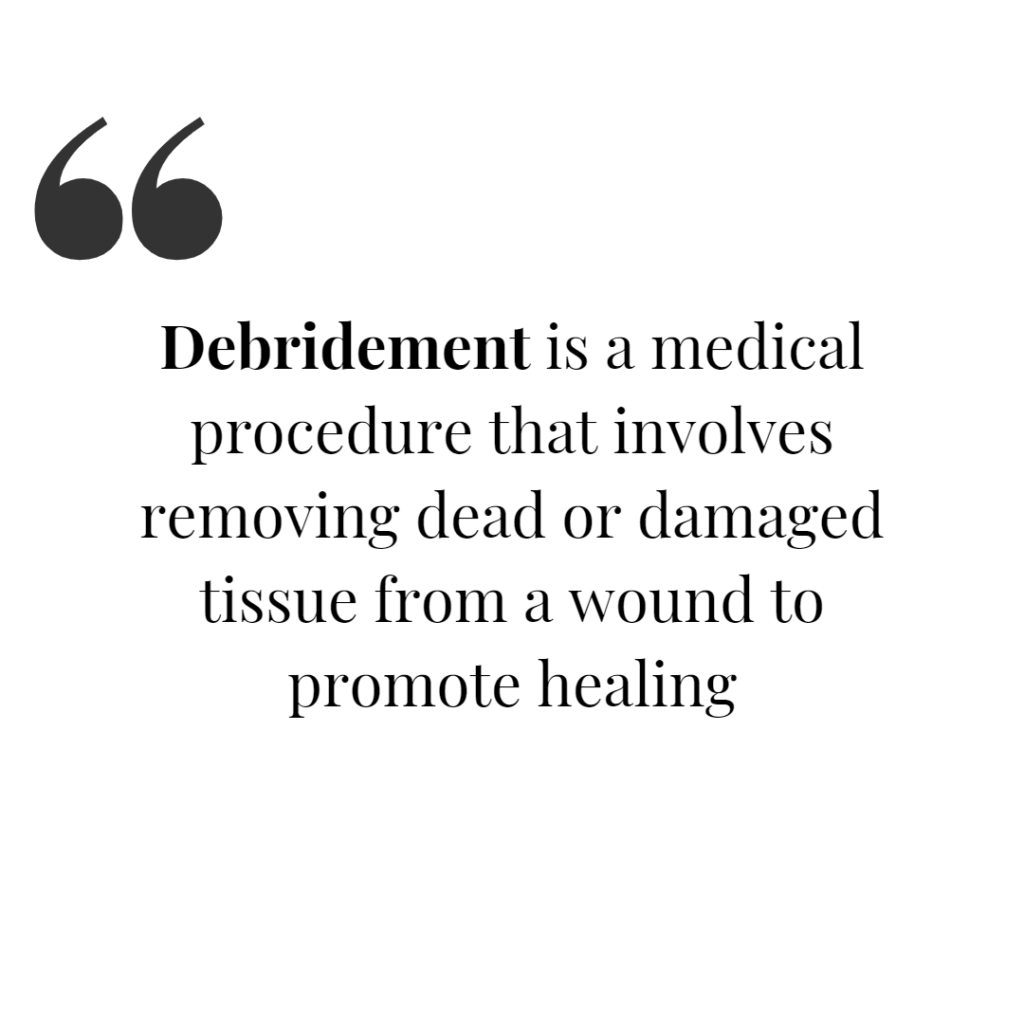
28 Feb WOUND DEBRIDEMENT: UNDERSTANDING THE PROCEDURE
Does Debridement Improve Wound Healing?
Yes, wound debridement is a medical procedure that involves removing dead or damaged tissue from a wound to promote healing. This is an important step in the wound healing process as it helps to reduce the risk of infection, control odors, and improve the appearance of the wound.
Debridement can be performed surgically or non-surgically, depending on the severity of the wound.
What Types of Wounds Need Debridement?
Wounds that have become infected, have dead or damaged tissue, or are slow to heal may benefit from debridement. This includes pressure ulcers, diabetic foot ulcers, and infected wounds.
How Long Does Surgical Wound Debridement Take?
The duration of surgical wound debridement varies depending on the size and complexity of the wound. On average, it takes about 30 minutes to an hour to perform surgical debridement.
What Happens After Wound Debridement?
After the procedure, the wound is typically covered with a dressing and the patient is monitored for any signs of infection or adverse reactions. The wound may be re-evaluated in a few days to determine if further debridement is necessary.

How is Debridement Performed?
Debridement can be performed in several ways, including:
- Surgical debridement: This is the removal of dead tissue using surgical instruments, such as scalpels or scissors.
- Autolytic debridement: This is the process of using the body’s own enzymes to break down and remove dead tissue.
- Mechanical debridement: This involves removing dead tissue using physical means, such as wet-to-dry dressings or pulsed lavage.
- Enzymatic debridement: This involves using topical creams or gels containing enzymes to break down and remove dead tissue.
WHAT ARE THE RISKS OF DEBRIDEMENT?
Risks associated with wound debridement include infection, bleeding, scarring, and adverse reactions to anesthesia. It is important to discuss the potential risks and benefits of the procedure with a healthcare provider.
Is Wound Debridement Painful?
Wound debridement can be painful, especially if performed surgically. Pain management measures, such as local anesthesia or conscious sedation, are typically used to minimize discomfort during the procedure.
Does Debridement Require Anesthesia?
This depends on the method of debridement being performed and the severity of the wound. For surgical debridement, anesthesia may be necessary, while for non-surgical methods, local anesthesia or no anesthesia may be used.
Do You Get Put to Sleep for Debridement?
This depends on the severity of the wound and the method of debridement being performed. For surgical debridement, general anesthesia or conscious sedation may be used to minimize discomfort. For non-surgical methods, local anesthesia may be used or no anesthesia at all.

